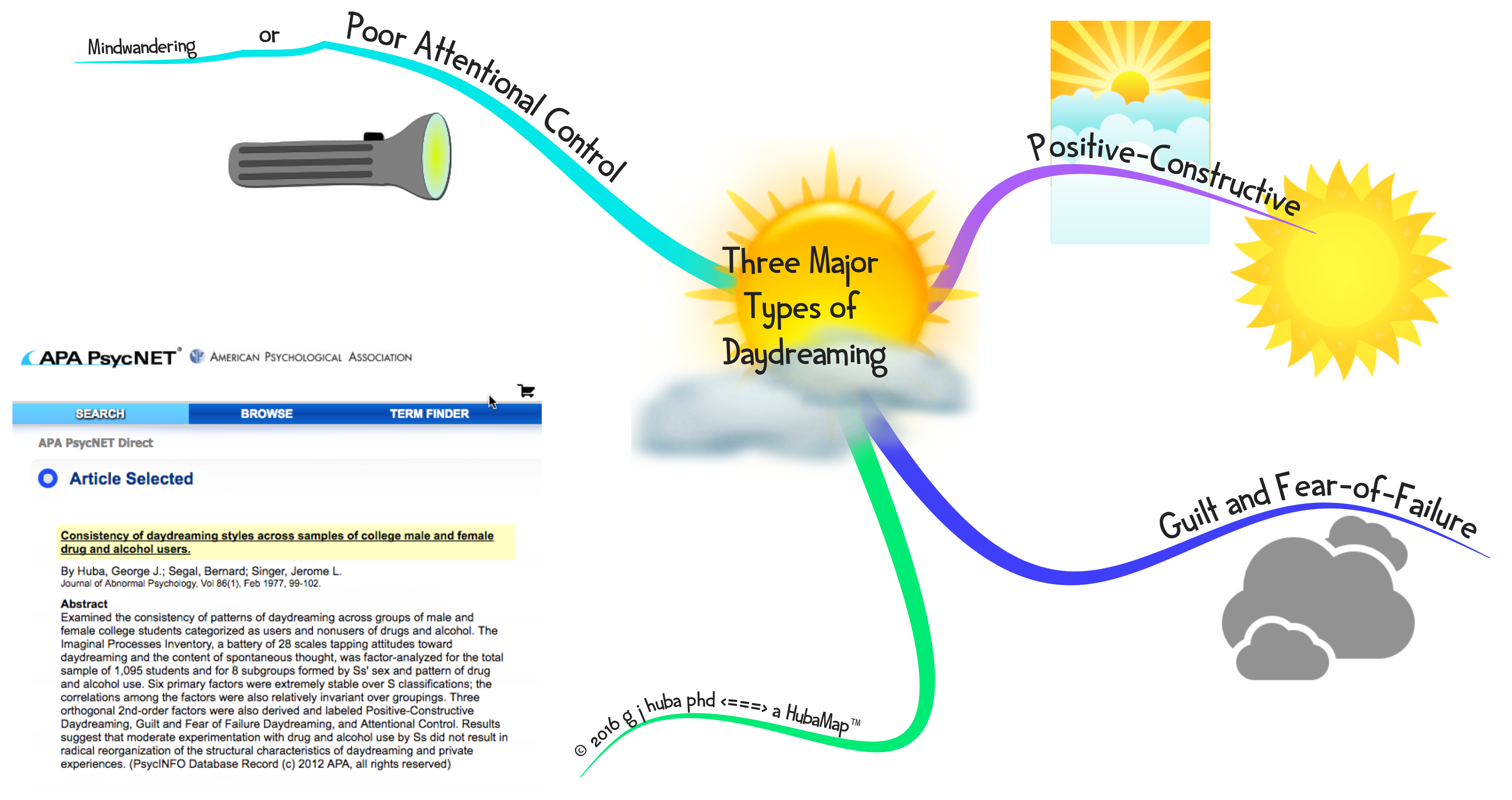About 40 years ago, I took an incredible course during my PhD program (in Psychology) taught by Jerome L Singer. Dr Singer was one of the earliest researchers of daydreaming, guided imagery, and imagination throughout the lifespan.
I learned about techniques for harnessing the power of daydreaming in a positive-constructive way, recognizing and minimizing ruminations involving guilt and fear-of-failure, and selectively changing the focus of attention in a deliberate way.
Out of that class came a long-term, extremely meaningful and productive collaboration with Jerry Singer and Bernie Segal. We did a lot of work together on the characteristics of daydreaming and the relationship of daydreaming styles to personality, sensation seeking tendencies, drug and alcohol use-abuse and other risk behaviors, gender, and social background.
I am very convinced that my knowledge of using daydreaming and other meditative states to expand positive feelings and cognitions as well as avoiding a lack of focus with ruminations of failure and guilt has helped me live better with dementia.
As I have learned over the past six or seven years, the subjective experience of cognitive decline into dementia starts out feeling like one of guilt and rumination and extreme anger and distress. Learning how to live through these “bad” daydreams and focus toward using the time spent in daydreaming in a positive-constructive way helps to organize and focus all of the mental effort expended into plans and new memories can be an important tool to live well with dementia. Much of what I experience during a typical day feels like an extended daydream. If I can keep the daydream focused on the positive, many different plans and thoughts come to me fairly freely. I am very sure that positive-constructive daydreaming and mind mapping are closely related in that most of my mind maps are originally conceived in long periods of daydreaming I have through my day of living with dementia. Not surprisingly, most of my creative mind maps are outlined, started, and sometimes finished right after these daydreams. And yes, while daydreams help produce very good mind maps summarizing what I am thinking, the converse is also true. With a good mind map in front of me, I can often stimulate create thinking down a directed path indicated in the mind map.
If you drift into periods of daydreaming as your traditional cognition becomes impaired, try to use your daydreams to open yourself up to individual brainstorming, analysis and planning. The periods of positive-constructive daydreaming can be one of the more valuable tools for helping you continuing to use your (degenerating) brain very effectively and creatively. Or not. It works well for me, may not work for others. But trying to guide your daydreams in constructive ways costs little but your time. If you want a professional to help you learning such techniques you should consult with a psychologist, licensed clinical social worker, or psychiatrist formally trained in cognitive-behavioral therapy (CBT).
Click on the mind map to expand it.





